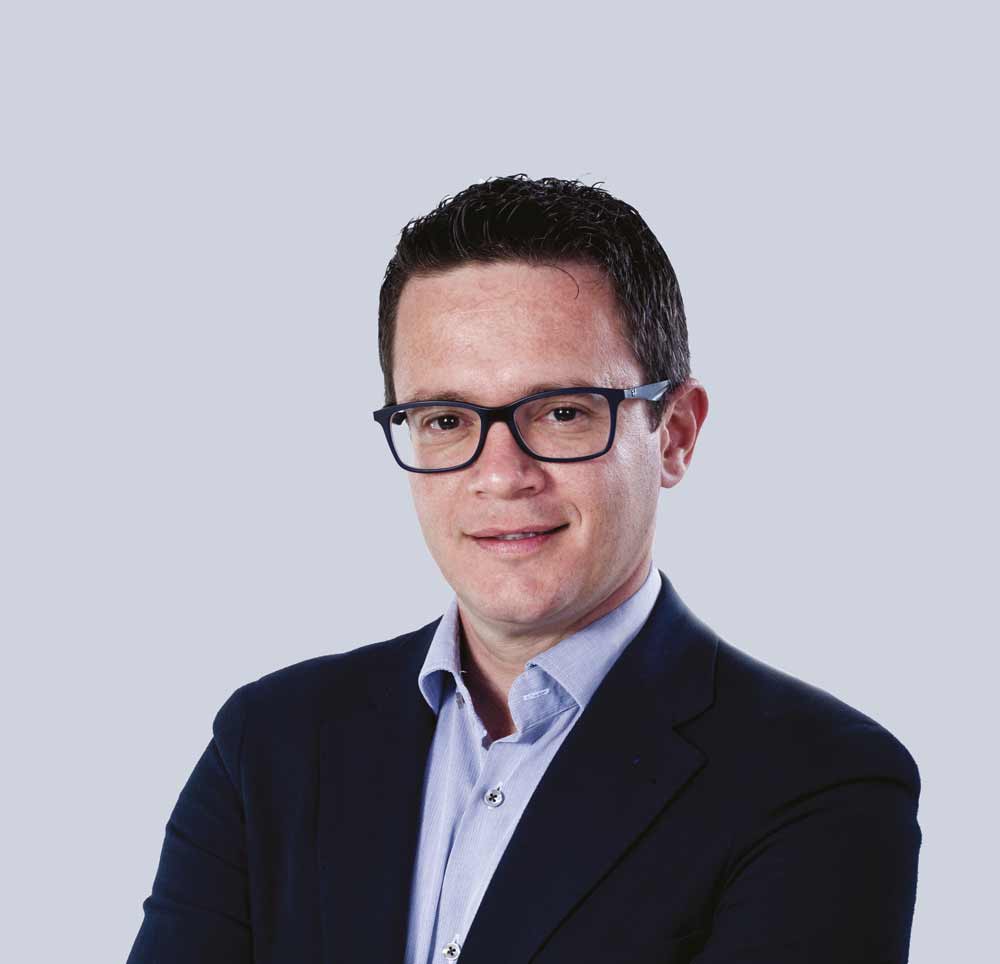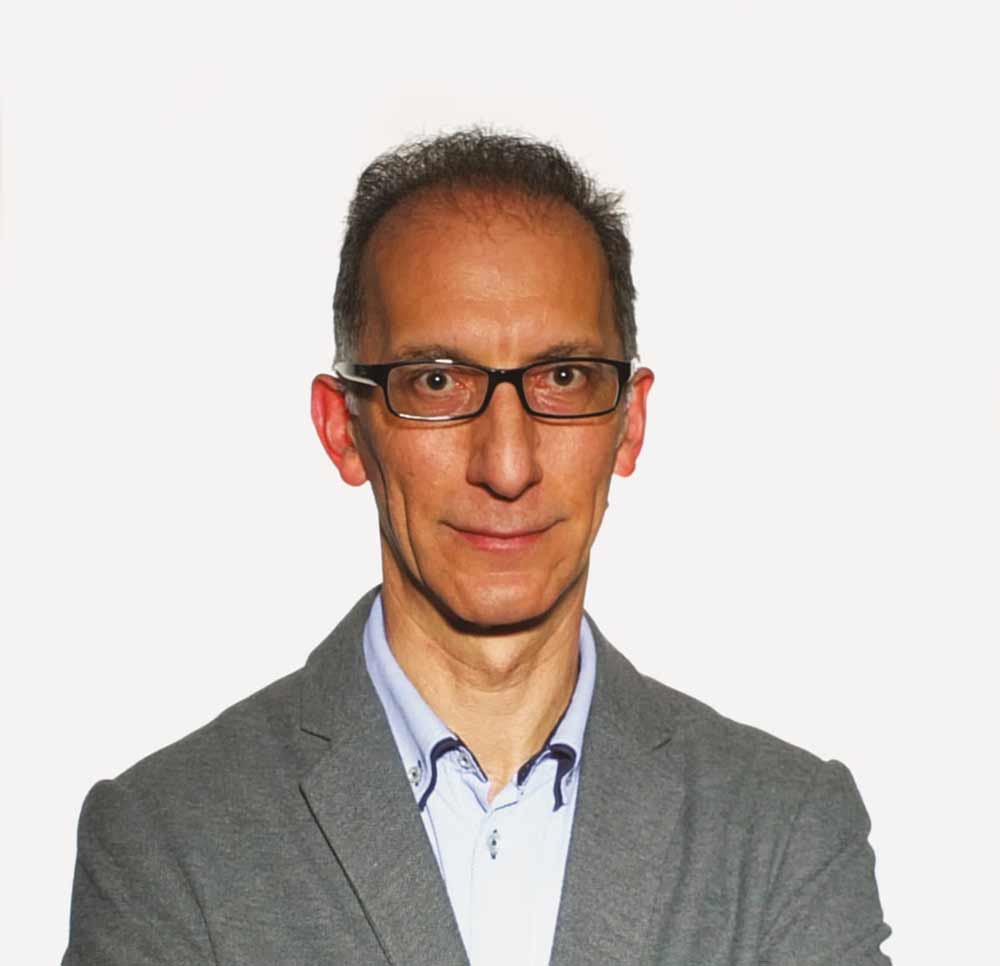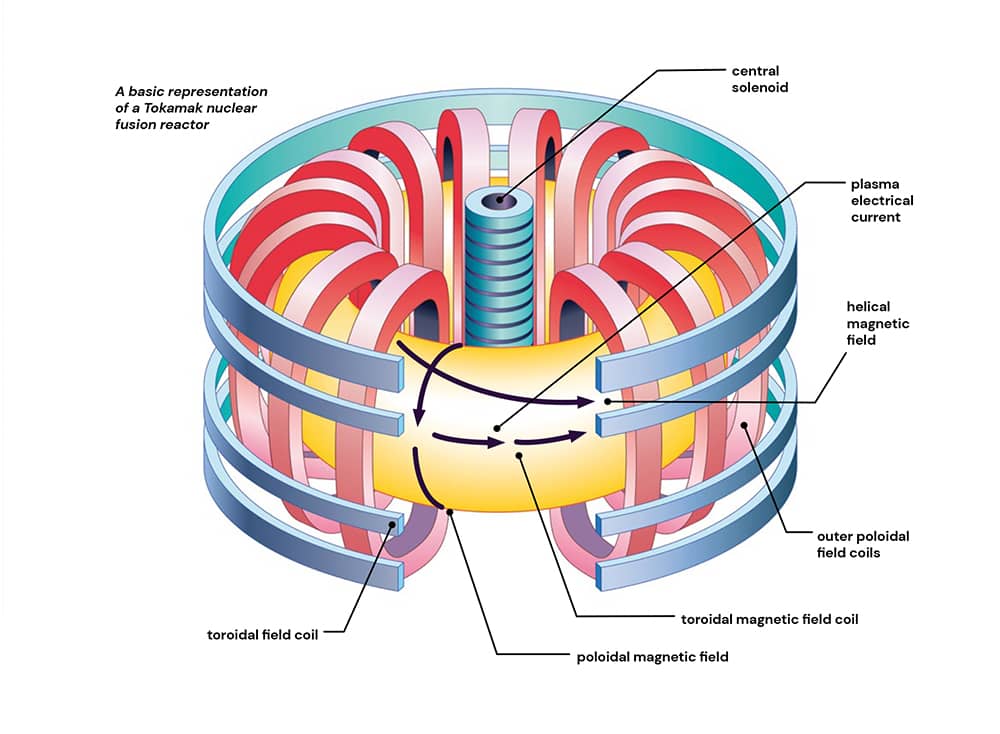Building a nuclear fusion reactor is an extremely stressful process — especially for stress analysts! Sam Shingles from THINK gets in touch with Prof. Ing. Pierluigi Mollicone and Prof. Ing. Martin Muscat, who are working together as part of a European Consortium to bring fusion nuclear power to Europe.
The climate crisis is currently one of the biggest challenges faced by modern society. Shifting the world away from coal and fossil fuels to cleaner alternatives is essential. In our first article, ‘Europe’s Fusion Future’, THINK spoke to Prof. Ing. Pierluigi Mollicone and Prof. Ing. Martin Muscat (Department of Mechanical Engineering, University of Malta [UM]), to learn how nuclear fusion energy might be the answer and about their involvement in the EUROfusion consortium — a Europe-wide consortium tasked with making nuclear fusion a feasible energy source.
QUICK FIRE FUSION, RECAP!
Nuclear fusion involves combining two lighter atoms together to generate energy, the same mechanism that occurs in our Sun. In the Sun, due to the extreme temperatures, hydrogen atoms travel at rapid speeds, collide with others, and fuse together producing a helium atom. The fuels currently used for fusion reactions on Earth are two isotopes of hydrogen: deuterium and tritium. Make sure to have a read of our first article to learn more about fusion and where it fits in the spectrum of other energy sources.
What is EUROfusion?
EUROfusion, also referred to as the European Consortium for the Development of Fusion Energy, supports and funds fusion research activities on behalf of the European Commission’s Euratom programme. Through Mollicone and Muscat, UM is now a part of this vast consortium of around 150 affiliated entities from 25 European member states.
Initially, Muscat and Mollicone were afraid that they would not be given any work, but the great news is they have received even ‘more than they asked for’, with Muscat attributing this to their competence in engineering stress analysis. As a matter of fact, there seems to be a lack of stress analysts within the EUROfusion consortium. Mollicone adds that being a part of the consortium also ensures they ‘fulfil the role of the university’ and not just teach, but show students that their course material does have real-world challenges they can contribute towards.
Engineering for a Fusion Future
One of the key challenges currently facing scientists and engineers like Mollicone and Muscat working within the EUROfusion consortium, is trying to recreate the environment of the Sun here on Earth to help facilitate fusion reactions. The gravitational pull of the Sun is ‘around 28 times that of Earth,’ they explain. This gravitational pull contains the hydrogen in the core of the star. That hydrogen turns into plasma, the fourth state of matter, when heated to 15 million degrees Celsius.


Plasma is a key component of the fusion process. Essentially plasma is an extremely hot gas, and as a result, the atoms that make it up split into electrons and ions, which can move independently of each other. Due to being electrically charged particles, plasma can be manipulated using electromagnetic fields and forces through high-powered magnets.
Jumping back to fusion, the Sun’s gravitational force confines the positive hydrogen nuclei, and the high temperatures cause those nuclei to collide at powerful speeds, fusing them into a helium atom.
Here on Earth, we don’t have the advantage of a huge gravitational force to contain the hydrogen atoms. To be able to achieve a fusion reaction, gases must be heated to temperatures of about 150 million degrees Celsius, around 10 times the temperature of the sun’s core. Containing plasma at these temperatures cannot be achieved using conventional materials, so one way of doing this is by using electromagnetism. Using strong magnetic fields to create what is in effect a ‘cage’ prevents the particles from escaping. As Mollicone explains, at the moment ‘the best structure for this is known as a Tokamak, which is a donut kind of structure; however, the cross section is not circular but more of a D shape.’ This magnetic containment enables the particles to remain in place, allowing the fusion reactions to occur gradually and generate energy.

Designing reactor components for these extreme and unusual conditions is not easy. This is where Mollicone and Muscat come in as stress analysts, studying components to prove each part is fit for purpose.
Isn’t all this designing and testing components exactly what engineers do? As Mollicone explains, ‘yes, it is standard engineering’; however, it is applied to ‘something completely new’ on a piece of equipment that ‘has never been built before’, where Muscat and himself are using the current nuclear code of standards to design components that can withstand extreme conditions. Mollicone uses the fathers of flight as an analogy: ‘the Wright brothers proved the concept of flying; however, to go from their first design, which only travelled a short distance, to the planes of today travelling across the globe, it doesn’t happen overnight.’ The physics of both designs is the same, but to achieve them ‘you need this type of engineering research, and that’s what we are doing here’.
The Energy Dream
Fusion could provide a major part of the world’s energy. The source is clean, could be stable, and can complement renewables to help achieve global net-zero emissions. However, there is still a long way to go before the amount of energy produced is more than that used to keep the plasma going. Despite the long timeframes, this research is already reaping benefits.
It’s important to have these applications for young people to see that what they study leads them somewhere.
Prof. Ing. Pierluigi Mollicone
Muscat and Mollicone are ‘generating knowledge on designing components for the reactor’ so that future engineers can design better reactors. They are also helping nurture better students. ‘When the students see us working on such a huge European and international project, they become inspired to try to do something with the knowledge that they gain from their course,’ says Muscat. Students would be able to see what they are learning in an industrial and research context. Mollicone reiterates that ‘it’s important to have these applications for young people to see that what they study leads them somewhere.’ In turn, this allows UM to have more students and encourage engagement through to postgraduate level studies. As Mollicone finishes, ‘more opportunities within the country, no matter how small, are still important for us,’ and the links to other countries can only mean positive things for Malta.
A bright future
As Muscat indicates, this is only the very beginning: ‘barely six months into a five-year project!’ In the long term, ITER, the world’s next nuclear fusion research facility, is currently being built and due to be commissioned around 2025, while DEMO, which is planned to demonstrate net energy power output, is planned to start operating around 2050. Europe is planning to have viable fusion energy by then. EUROfusion is a step towards this dream and a new dawn of opportunities for the Maltese Islands to be a part of a zero-carbon future, helping the world achieve a cleaner and less polluting energy future.
The EUROfusion consortium is a project in collaboration with the Malta Council for Science and Technology via the ENDURE programme, helping to design components for a fusion reactor that aims to produce more energy than it requires to run.
Further Reading
Energy.gov. n.d. DOE Explains…Tokamaks. [online] Available at: <https://www.energy.gov/science/doe-explainstokamaks> [Accessed 15 November 2021].
Euro-fusion.org. n.d. Fusion On Earth- EUROfusion. [online] Available at: <https://www.euro-fusion.org/fusion/fusion-on-earth/> [Accessed 15 November 2021].
UCL Department of Space and Climate Physics. n.d. What is Space Plasma?. [online] Available at: <https://www.ucl.ac.uk/mssl/research/solar-system/space-plasma-physics/what-space-plasma> [Accessed 15 November 2021].





Comments are closed for this article!